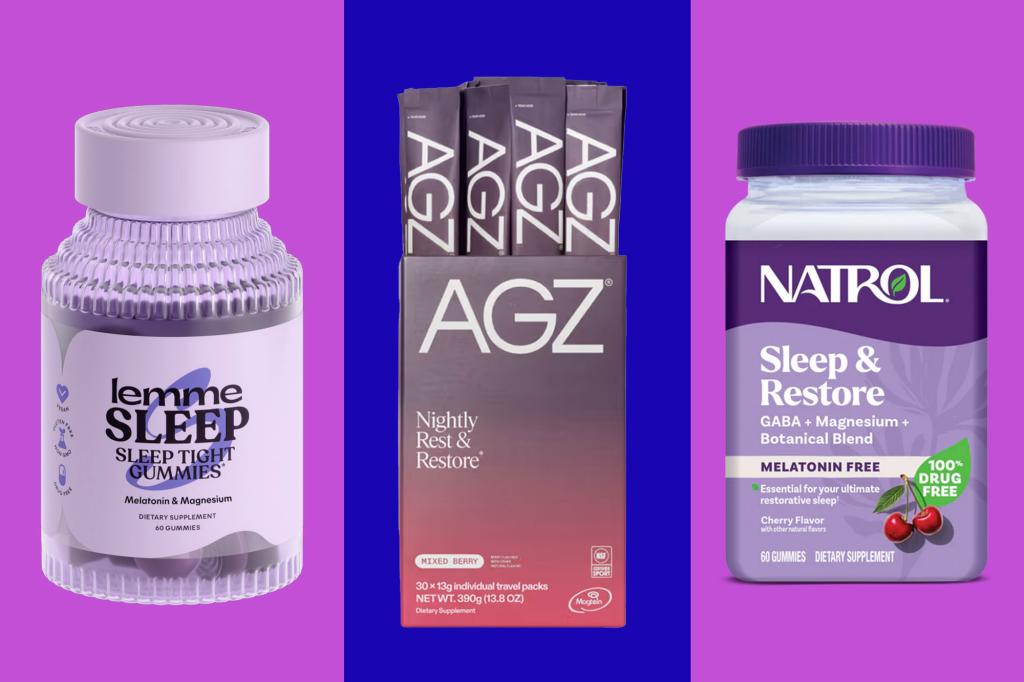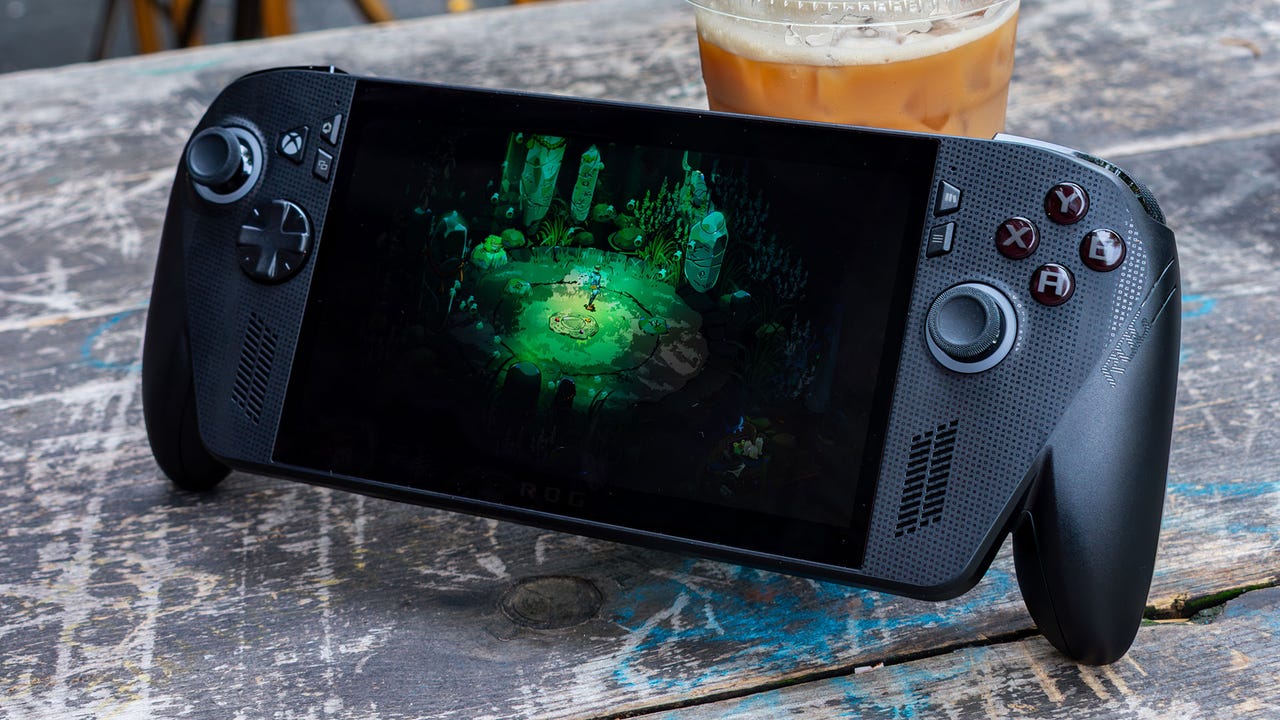The Asus ROG Xbox Ally X is a fascinating little device. Because while it’s being sold as a sort of handheld Xbox, it’s more of a sequel to last year’s incredible Asus ROG Ally X. But the Xbox side of it can’t be ignored, because it’s the first device to launch with support for the new Xbox Full Screen Experience. This allows the handheld to boot straight into the Xbox App within Windows, without loading Explorer or any of the non-gaming-related background tasks that typically load when you boot up Windows 11. In a lot of ways, this partnership feels like Microsoft’s response to the rise of the SteamOS, and for the first time since the Steam Deck came out in 2022 it might actually have something that’s as easy to use.
So while I would hesitate to call the Xbox Ally X an ‘Xbox’ – no matter what Microsoft’s marketing claims – it does feel like a clear evolution of handheld gaming PCs, and a sign of what’s to come once the Full Screen Experience launches for all PCs sometime in 2026. Either way, the Asus ROG Xbox Ally X is the new benchmark for handheld gaming PCs for the foreseeable future.
Design
Ever since the Steam Deck came out, most handheld gaming PCs have looked similar to each other. They’ve been essentially rectangles with a big screen in the center and controller buttons on the sides. The Xbox Ally X also fits this, but with a twist: two jutting plastic grips meant to emulate an Xbox controller.
The result is a handheld that looks like you took an Xbox controller, stretched it out and then slapped a display in the middle. At first, I thought this looked silly – and it does – but after using the device for about a week, I can see the vision. Despite the Xbox Ally X weighing more than the original Ally X, it’s even more comfortable, and that older handheld was no slouch, either.
That’s because the weird controller fits more naturally in my hands, and avoids the problem some other handhelds run into, where they start to dig into my hands after a little while. Even after doing a marathon session in Cyberpunk 2077 to test the battery – more on that in a bit – I didn’t really feel the need to put the device down.
The Xbox Ally X is slightly larger than the original, measuring 11.42 inches long, 4.76 inches tall, and 2 inches thick at its thickest point. It’s also slightly heavier, weighing in at 1.58lb compared to 1.49lb on the 2024 Ally X. That doesn’t seem like a big difference, but I can definitely feel it when I lift both consoles at the same time – the Xbox Ally X feels heavier.
Despite the larger size, the two devices have nearly identical button placements, save for a few radical changes. For one, the Armoury Crate button is now on the left side of the display, and pressing it brings up the Asus Control Center tab, but within the Xbox Game Bar. On the right side of the display, what used to be a button that focused the Armoury Crate app is now a library button, which just brings you to the library section of the Xbox app.
That Armoury Crate button on the left is an odd one, though. While, yes, it does open to the Control Center within the game bar, there’s now a larger Xbox button directly to the left of it that also brings up the Game Bar. Then, it’s just a simple task of hitting left on the D-Pad to enter the Control Center. Asus could have just trimmed an entire button here and it would have been fine.
This also means that there is no button that directly brings up Armoury Crate anymore, with it instead being an option in the Control Center. That adds an extra step to the process of updating drivers and such, but it does mean you won’t accidentally open Asus’ settings app when you’re trying to pause your game anymore.
The rest of the buttons are what you’d expect on any controller, and they feel excellent across the board. The triggers, in particular, are a standout. Not only are they Hall Effect, but they have the same Impulse Trigger tech as first-party Xbox controllers. In games that support it, this makes the triggers give feedback when you do certain things, just like they do when you’re playing games on the Xbox Series X. For instance, in Forza Horizon 5, the triggers will give haptic feedback when you first start accelerating and when you brake, simulating the friction you might feel if you were actually driving a car. There aren’t many games that actually do support this feature on PC, though, so don’t expect it in every game you play.
However, while the triggers feel great, I did run into a manufacturing problem on the unit I received, where the left trigger would slide out of place when I pressed it, leading to it scraping up against the chassis. Asus did swap out the unit, and the new one is working perfectly, so it could very well have been an isolated incident, but it’s something to be aware of.
The top of the device is where you’re going to find all the ports. Two USB-C ports are on the left side of the device, one of which is USB 4.0. On the other side you’ll find a MicroSD card reader and the power button, the latter of which doubles as a fingerprint sensor for Windows Hello, and a headphone jack. This is the same configuration found in the original Ally X, and while I’d like for a USB-C slot to be on the bottom of the device, the Xbox Ally X is still a flexible device.
Cooling is handled just like most other modern handhelds. Intake fans suck cool air through the fun-shaped vents on the back of the device, then spit out the hot air through vents on the top. This is effective at dissipating heat, though when the device is plugged in and is set to the “Turbo” performance mode – which happens by default – the processor will get warm, reaching up to 80°C in demanding games. For the most part, I didn’t notice this temperature beyond just watching the performance overlay, but I will say that after some long gaming sessions the display was noticeably warm to the touch, but not so much that it’ll burn you.
Display
The Asus ROG Xbox Ally X has a 7-inch 1080p display with a 120Hz refresh rate and support for Freesync Premium, AMD’s Variable Refresh Rate tech. This is the same exact panel found in last year’s Ally X, and that’s not a bad thing. Because while it’s not as beautiful as the Lenovo Legion Go 2‘s 8.8-inch OLED display, its modest resolution makes for a perfect pairing for the Z2 Extreme.
Colors look bright, especially when the brightness is turned up a bit. The display supports up to 500 nits of brightness, and even when I had it dimmed for battery testing, I had no problem using the handheld in a variety of settings, including a brightly lit room.
The 120Hz refresh rate also falls a little short of the Legion Go 2’s 144Hz refresh rate, but not by much. Even then, there aren’t many games that you’re going to be running at 120fps, especially if you’re trying to play higher-spec games like Cyberpunk 2077 or Clair Obscur: Expedition 33. Plus, the variable refresh rate makes sure that even when the frame rate drops – and it will drop – things stay as smooth as possible. I don’t think I could recommend a handheld without some sort of variable refresh rate these days.
The Xbox Full Screen Experience
While the Asus ROG Xbox Ally X is an excellent handheld gaming PC in its own right, what really makes this device special is its software experience. Asus’ partnership with Microsoft nets it the first implementation of Xbox Full Screen Experience, which won’t be available for other Windows devices until early 2026.
The unit Asus sent me was running on a slightly older version of Windows 11, but through some updates, it was able to get to the point where Microsoft is claiming the device will ship when it hits store shelves. Once I ran it through all the pre-launch updates, I reset the device to go through the intended setup process – and it was awesome.
On previous Windows handhelds, you’d have to go through the same Windows 11 setup procedure as you would on a laptop – only without a keyboard and mouse attached. And because during the setup the controller was essentially there for looks, you’d have to rely on just the touch screen. With Xbox FSE, you can go through the whole setup rigamarole with the controller – from signing into your Microsoft account to setting up your Wi-Fi.
Through this process I discovered my favorite thing about this software change. Windows’ touchscreen keyboard is now usable with a controller by default, rather than needing to tap your fingers on the screen. Even if this version of Windows only had this change, I’d consider it a win. Luckily, though, there’s a lot more to it.
Once you’re through the setup process, the handheld boots into the Xbox app. Of course, Game Pass is front and center, and that’ll be great if you use that service. But if you hit left on the D-Pad then scroll down, you’ll get to the Library page. From here, you can go to “My apps,” and then install third-party stores.
Once you’re in this page, Steam is pre-installed, so you just need to launch it, which will open it in a new window, but won’t take you out of the Full Screen Experience. Likewise, if you install Battle.net, Epic Games Store or GOG Galaxy, you’ll be able to go through those setup processes without ever having to interact with the desktop. However, it is limited to those apps. In the week or so I’ve spent with the ROG Xbox Ally X, I haven’t found a way to add new apps to this library page, so you’ll need to get to the desktop to download literally any other program.
Luckily, getting to the desktop is easy. You can just swipe up from the bottom of the display and tap “Windows Desktop,” it’ll give you a little pop up warning, and then you’ll be on the desktop almost instantly. It’s good that it’s so easy to get to the Windows Desktop, because you’ll still need it to download Windows Updates or any non-gaming software you might need, like Discord.
Once you’ve done your business on the Windows Desktop, you can get back to the Full Screen Experience by hitting the Xbox button, scrolling over to the cogwheel, and then down to “launch Xbox Experience.”
There are still a couple of kinks Microsoft needs to work out with the Xbox Full Screen experience, however. Sometimes you have to hit a button on the gamepad a couple times to get it to start navigating the app. I’ve also had a couple problems where going into Task View – by holding down the Xbox button for a couple of seconds – and hitting the X button to close an app just doesn’t work right away. These are bugs that can get patched out in a future build, though.
I really wish Microsoft could find a way to work in critical applications like Windows Update to the Full Screen Experience, because the Xbox Ally X is at its best when you don’t have to think about the desktop at all. And it’s not just because it’s easier to launch games or the slightly better gaming performance – though those are huge benefits. Instead it’s the little things: No pop up notifications or having programs launch after you boot that you’ve forgotten to disable at startup. In so many ways, this Full Screen Experience feels the way PC gaming should feel, especially for folks that don’t like digging through a labyrinthine operating system. Microsoft is close to something as good as SteamOS, it just needs a few updates to get over the finish line.
Performance
Last year, the Asus ROG Ally X was exceptionally good because it took the Z1 Extreme and stretched it further than other handhelds were able to. The Xbox Ally X does basically the same thing with the Z2 Extreme.
Even without the Full Screen Experience, the Xbox Ally X is a powerful little handheld, delivering 42 fps in Cyberpunk 2077 and 76 fps in Forza Horizon 5 – both at high settings, without ray tracing and with upscaling set to ‘Quality.’ That’s already good performance, but when I tested those games in the Full Screen Experience, performance improved to 44 fps and 77 fps, respectively. That’s not a huge bump, by any means, but in the case of Cyberpunk 2077, that’s a 5% boost to performance by just booting into the Xbox app.
However, that performance difference seemed limited to actual games. In 3DMark, whether I benched it in the FSE or in Desktop Mode, I saw basically no difference. For instance, in the Steel Nomad test, I got 606 points while in the FSE, and 603 points outside of it – that’s within the margin of error.
What’s more impressive, though, is how it compares to the Lenovo Legion Go 2, which uses essentially the same chip. In 3DMark, the Xbox Ally X is between 3-6% faster, with the biggest difference in the Night Raid test, where Asus’ handheld gets 33,793 points to Lenovo’s 31,685. Admittedly, the smallest difference was in the most demanding test, Steel Nomad, where the Ally X only beat the Legion Go 2 by 3%. But that’s still a huge win, considering the Legion Go 2 with the Z2 Extreme is $350 more expensive.
When it comes to actual games, though, it was always going to lean in Asus’ favor just by virtue of it having a lower resolution display – even if it’s a small difference (1080p on the Xbox Ally X vs 1200p on the Legion Go 2). But in Forza Horizon 5, the Lenovo Legion Go 2 only managed 65 fps to Asus’ 77. That’s an 18% improvement. And in the Cyberpunk 2077 benchmark, the Ally X beats the Legion Go 2 44 fps to 37 fps – another 19% gap.
Even when unplugging the Xbox Ally X, which automatically sets it to a 17W performance mode, I was able to get a solid 30 fps at high settings in Cyberpunk 2077 throughout my battery rundown test, only really dropping when entering Dogtown. The Xbox Ally X isn’t going to be as powerful as a gaming console that you need to plug in and connect to your TV – and expecting otherwise out of a portable device like this would be silly. However, with how well it plays even demanding games like Cyberpunk without making them look muddy makes the Xbox Ally X the handheld to beat right now.
Battery Life
Any handheld gaming device is going to struggle with battery life. There’s only so much battery you can put into such a small chassis, and if you want a powerful chip, it’s going to suck up as much power as it can. But despite that, the Asus ROG Xbox Ally X is a resilient little thing.
In the PCMark10 battery test, which simulates a variety of office tasks, the Xbox Ally X lasted about 9 hours and 48 minutes. That’s not bad, but it is shorter than the Legion Go 2, which lasts 10 hours and 52 minutes in the same test. However, that test needs to be run in desktop mode, and isn’t really indicative of how most people will probably use the Ally X.
When I set a stopwatch and started running down the battery with Cyberpunk 2077, the story changed. The battery lasted 2 hours and 34 minutes, beating the Legion Go 2 and even tying with the Steam Deck OLED, which has a much lower-power chip powering it. We’re still in the realm of handhelds only lasting a couple of hours while playing games, but a two and a half hour session playing a demanding game is nothing to shake a stick at.
Price
The Asus ROG Xbox Ally X’s price is kind of the elephant in the room. At $999, not only is it more expensive than the $799 ROG Ally X, but it’s twice the price of the Nintendo Switch 2 or the Steam Deck. Everything is getting more expensive lately, and while the Asus ROG Xbox Ally X is certainly guilty of this – it’s actually pretty reasonably priced compared to other similar devices that’ve launched in the last year.
For instance, the Lenovo Legion Go 2 starts at $1,099 with a weaker processor, with the Z2 Extreme model costing as much as $1,479. Then, the MSI Claw A8, which hasn’t even launched in the US, is out in the UK right now for £850 which is around $1,135 – and likely more once tariffs are worked into the equation. Handhelds are getting more expensive, but for devices with the Z2 Extreme, the Asus ROG Xbox Ally X is actually one of the most affordable right now. Plus, those other devices aren’t launching with the Xbox Full Screen Experience, which will put the Xbox Ally X on another level until Microsoft releases it for other Windows gaming PCs sometime next year.
Jackie Thomas is the Hardware and Buying Guides Editor at IGN and the PC components queen. You can follow her @Jackiecobra
First Appeared on
Source link













